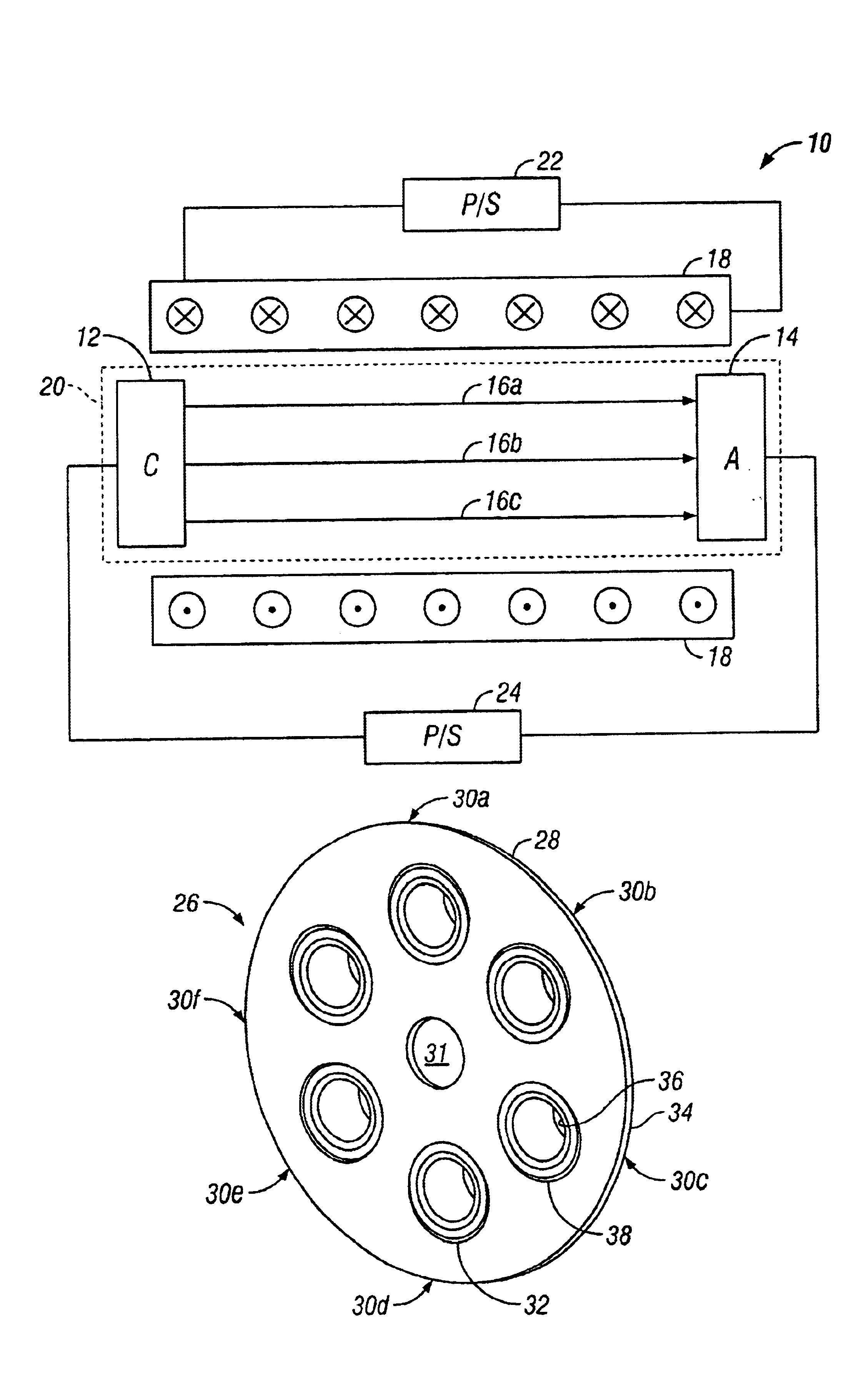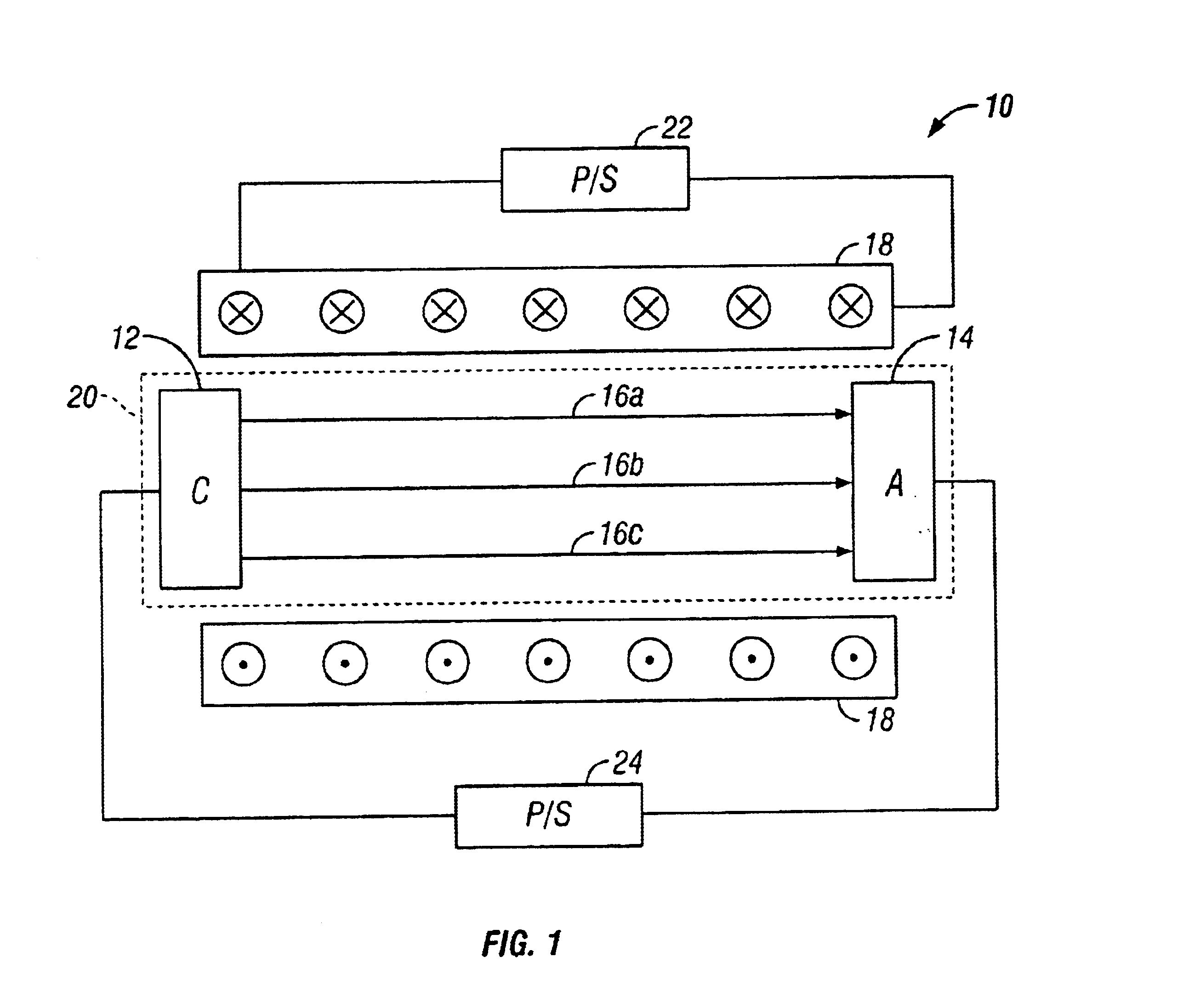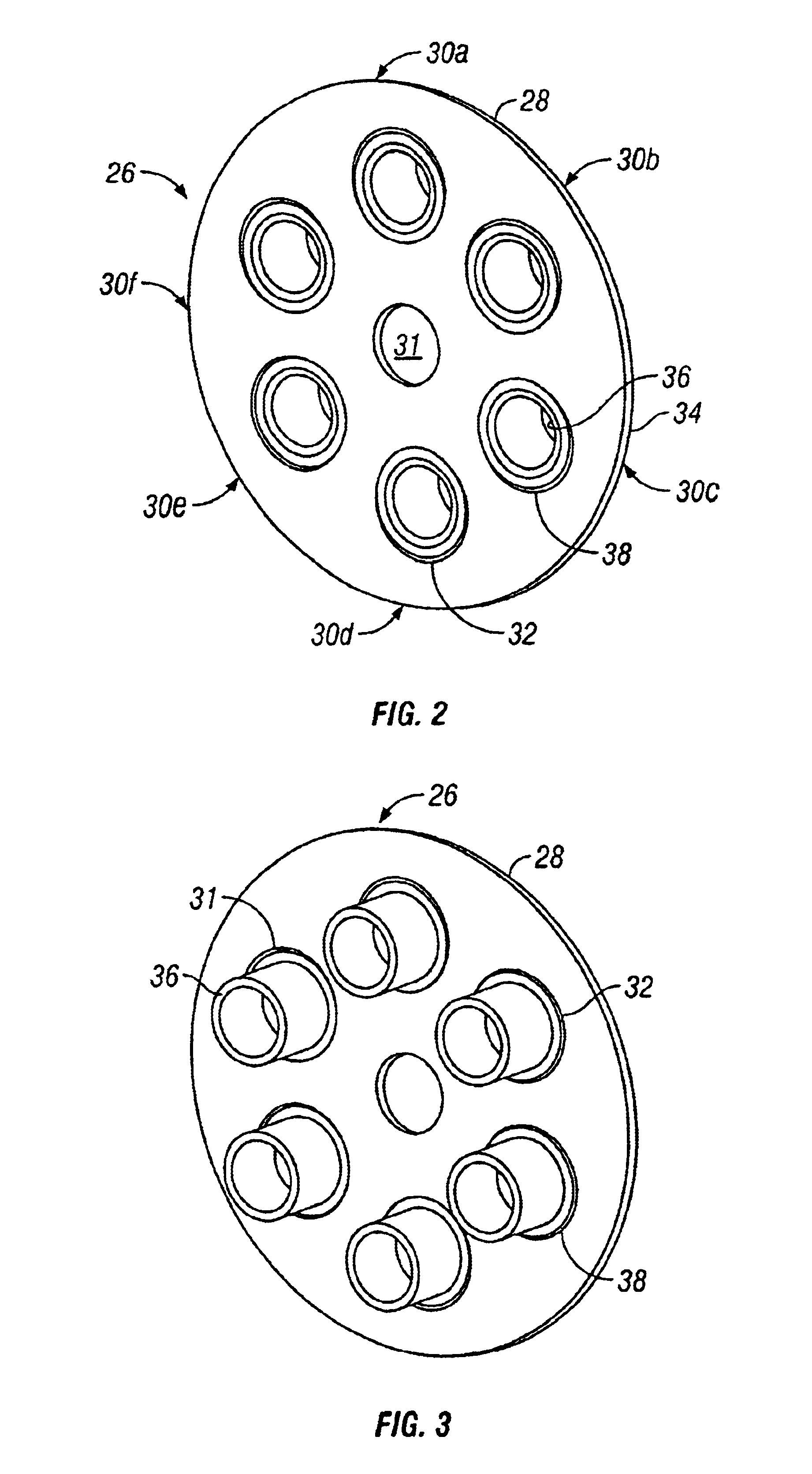Method and apparatus for magnetic focusing of off-axis electron beam
a technology of magnetic focusing and electron beam, which is applied in the direction of discharge tube/lamp details, instruments, heat measurement, etc., can solve the problems of essentially one-dimensional problem, beams that are more susceptible to defocusing effects, and weak focusing, so as to prevent or substantially reduce beam twist
- Summary
- Abstract
- Description
- Claims
- Application Information
AI Technical Summary
Benefits of technology
Problems solved by technology
Method used
Image
Examples
Embodiment Construction
Embodiments of the present invention are described herein in the context of a method and apparatus for magnetic focusing of off-axis electron beams. The invention is intended to be useable with a broad range of multi-beam electron devices as well as single-beam linear electron devices employing an off-axis electron beam. Those of ordinary skill in the art will realize that the following detailed description of the present invention is illustrative only and is not intended to be in any way limiting. Other embodiments of the present invention will readily suggest themselves to such skilled persons having the benefit of this disclosure. Reference will now be made in detail to implementations of the present invention as illustrated in the accompanying drawings. The same reference indicators will be used throughout the drawings and the following detailed description to refer to the same or like parts.
In the interest of clarity, not all of the routine features of the implementations descr...
PUM
| Property | Measurement | Unit |
|---|---|---|
| magnetic field | aaaaa | aaaaa |
| magnetic focusing | aaaaa | aaaaa |
| magnetic field asymmetry | aaaaa | aaaaa |
Abstract
Description
Claims
Application Information
 Login to View More
Login to View More - R&D
- Intellectual Property
- Life Sciences
- Materials
- Tech Scout
- Unparalleled Data Quality
- Higher Quality Content
- 60% Fewer Hallucinations
Browse by: Latest US Patents, China's latest patents, Technical Efficacy Thesaurus, Application Domain, Technology Topic, Popular Technical Reports.
© 2025 PatSnap. All rights reserved.Legal|Privacy policy|Modern Slavery Act Transparency Statement|Sitemap|About US| Contact US: help@patsnap.com



